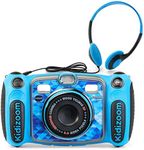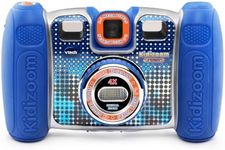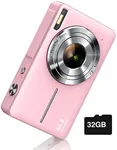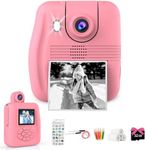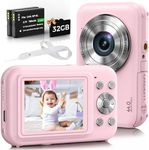Buying Guide for the Best Digital Camera For Kids
Choosing a digital camera for kids is all about finding a balance between simplicity, durability, and features that will keep them engaged. Kids need a camera that is easy to use, can withstand a few bumps, and offers enough fun to spark their creativity. When shopping, focus on the features that make the camera both enjoyable and practical for a child’s age and interests.DurabilityDurability refers to how well the camera can handle drops, bumps, and rough handling, which is especially important for kids. Cameras designed for children often have rubberized edges or are made from tough plastic to survive accidental falls. If your child is very young or tends to be a bit rough with their toys, look for cameras that are specifically labeled as shockproof or rugged. For older or more careful kids, a standard build may be sufficient.
Ease of UseEase of use means how simple the camera is to operate, including the size and clarity of buttons, menu navigation, and how quickly a child can start taking photos. Cameras for kids should have large, clearly marked buttons and straightforward menus. Younger children benefit from cameras with fewer features and automatic settings, while older kids might enjoy a few more options to experiment with.
Image Quality (Megapixels)Image quality, often measured in megapixels, determines how clear and detailed the photos will be. For kids, extremely high megapixel counts are not necessary; cameras with 5 to 8 megapixels are usually more than enough for fun snapshots and small prints. If your child is showing a real interest in photography or wants to print larger photos, you might consider a camera with a higher megapixel count, but for most kids, a basic level is perfect.
Size and WeightThe size and weight of the camera affect how comfortable it is for a child to hold and carry. Lightweight and compact cameras are easier for small hands to grip and less tiring to use. For very young children, look for chunky designs that are easy to hold, while older kids may prefer something a bit sleeker but still manageable.
Battery LifeBattery life indicates how long the camera can be used before needing a recharge or new batteries. Kids often forget to turn off devices, so a camera with long battery life or auto-shutoff features is helpful. Cameras that use standard AA or AAA batteries can be convenient for quick replacements, while rechargeable batteries are more eco-friendly and cost-effective in the long run.
Fun FeaturesFun features include things like built-in games, photo filters, frames, and video recording. These extras can make the camera more engaging and encourage kids to use their creativity. If your child enjoys playing with effects or making short videos, look for a camera that offers these options. For kids who just want to take pictures, a simpler model may be better.
Water ResistanceWater resistance means the camera can handle splashes or even being submerged in water, which is great for poolside or beach use. If your child likes outdoor adventures or you plan to use the camera on vacations near water, a water-resistant or waterproof camera is a smart choice. For mostly indoor use, this feature may not be necessary.
Parental ControlsParental controls allow you to limit certain features or review photos taken by your child. This can be useful for younger kids to ensure safe and appropriate use. If you want more oversight, look for cameras that offer these settings. For older or more responsible children, this may not be as important.







